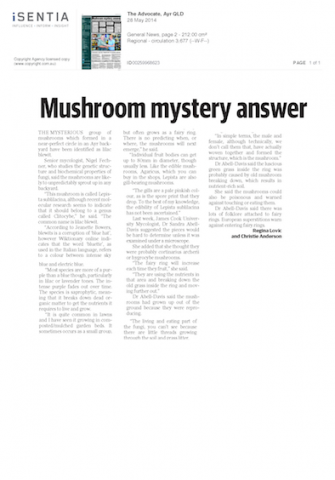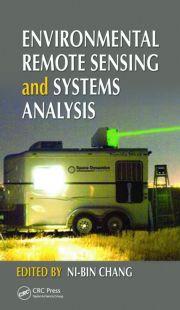Resources
 The NERP TE Hub is now entering its third year of operation. In the last month, milestone reports from every project have been presented to the four Hub Implementation Groups forming the basis for dialogue with our research users around mechanisms for effective knowledge transfer and uptake of results.
The NERP TE Hub is now entering its third year of operation. In the last month, milestone reports from every project have been presented to the four Hub Implementation Groups forming the basis for dialogue with our research users around mechanisms for effective knowledge transfer and uptake of results.
It was pleasing to see the richness of outputs emerging from these portfolios. Most projects produced peer-reviewed publications during the period and the strongest performers had multiple papers accepted by the very best journals in their field. There were new discoveries such as the first hard evidence that animals in the Wet Tropics rainforest are responding to climate change in predictable ways, that wedge-tailed shearwaters nesting on the Great Barrier Reef are trans-equatorial migrants that overwinter in Micronesia, that flooding from extreme events affects clarity of the GBR Lagoon long after the freshwater has dispersed as fine sediments are remobilised by the wind, and that the cost of more sediments in the water is slower growth and lower survival of corals.
It was rewarding to see some of these results being taken up by managers with immediate effect. Examples that come to mind include the close collaboration with QDEHP to protect the sole known population of a threatened and endangered frog, the creation of referral guidelines under the EPBC Act for future developments that may impact on turtles and dugongs, the consideration by the DSEWPaC Chemical Assessments Unit of new information on the toxicity and persistence of residual pesticides influencing water quality guidelines, and the provision of expert advice to governments, NGOs and community groups on how to deal with flying foxes in a managed landscape.
It was satisfying to hear about higher levels of engagement with Indigenous stakeholders so soon after the Hub released its Strategy and Implementation Plan. Examples that come to mind are collaborations with Traditional Owners in north Queensland to survey snubfin dolphins, with rangers from the Torres Strait Regional Authority Land and Sea Management Unit to assess the health of coastal vegetation and coral reefs, the employment of Girrigun Indigenous rangers in prescribed burns by Queensland Parks and Wildlife Service of forest habitat supporting endangered mahogany gliders, and the employment of Indigenous research assistants to connect some of the social and economics projects with their communities.
Finally I have been impressed by the work of the communications team at the RRRC to make this new information available quickly and to disseminate multiple messages about the NERP TE Hub program including syntheses and the latest series of Research Snapshots. All of this material can be found on our website (www.nerptropical.edu.au) and I encourage you to visit it on a regular basis. From there you can follow the link to the allied e-Atlas (www.e-atlas.org.au), which I believe is now one of the largest online compilations of map services in Australia. It is a free public resource that has something useful for nearly everyone.
For further information contact: p.doherty@aims.gov.au
Daily Life
12 December 2013
Mining poses a greater threat to the health of the Great Barrier Reef than agriculture, according to one marine scientist who has cast doubt on the federal government's prediction that water quality will improve along the reef coast.
On Tuesday federal Environment Minister Greg Hunt gave the green light to dredging and dumping associated with four coal terminals, and the building of a liquid natural gas refinery and pipeline on the Great Barrier Reef coast. Read more
![]()
Devlin, M., Schroeder, T., McKinna, L., Brodie, J., Brando, V., Dekker, A. (2012) Monitoring and mapping of flood plumes in the Great Barrier Reef based on in-situ and remote sensing observations, in: Environmental Remote Sensing and System Analysis. CRC Press.
Related to Project 5.3
A workshop was held on the 5th August, exploring the impact of cumulative pressures on the Great Barrier Reef. The workshop was facilitated by Britta Schaffelke, AIMS, and summarized the outputs from all NERP water quality projects including 4.1, 4.2 and 5.2. The day focused on the measurement of the accumulation of impacts on reef organisms from simultaneous and sequential pressures which are diminishing the ability of the reef to recover to previous states (i.e. impaired resilience).
All stressors/pollutants currently measured on the GBR are interacting through complex responses and processes and require a management response that is aware of how these pressures are working cumulatively across GBR ecosystems.
The main objectives of this workshop were to inform stakeholders about relevant NERP water quality outcomes. In addition and in collaboration with stakeholders, the workshop began a process of developing a GBR-relevant description of cumulative impacts and identified information needs of the research-users. Finally, the workshop identified future research focus areas for experimental ecology/modelling in engaged discussions between researchers and research-users.
Discussion focused on the need to develop cumulative impact assessment policies, accounting for the multiple use of the GBR and the numerous pressures that it faces. The tools available are monitoring, experimentation, models and scenarios built from the outcomes of the driver-response data collected in the NERP water quality projects.
The day was well attended, with researchers and research-users representing Australian Institute of Marine Science (AIMS), RRRC, James Cook University, University of Queensland, Department of Environment and Heritage Protection, Great Barrier Reef Marine Park Authority, World Wildlife Fund, Australian Marine Parks Tourism Operators, Reef Catchments and NQ Dry Tropics.
For more information, contact Dr Sven Uthicke from AIMS at s.uthicke@aims.gov.au.

 The Advocate
The Advocate
28 May 2014
THE MYSTERIOUS group of mushrooms which formed in a near-perfect circle in an Ayr backyard have been identified as lilac blewit.
Senior mycologist, Nigel Fechner, who studies the genetic structure and biochemical properties of fungi, said the mushrooms are likely to unpredictably sprout up in any backyard.

 The Advocate
The Advocate
21 May 2014
A GROUP of mysterious purple mushrooms have formed in an almost perfect circle in a backyard in Ayr.
Eighty-six-year-old Ayr resident, Berteram “Hock” Keyse first found a small group of the purple mushrooms in his backyard almost 12 months ago, but more recently, they’ve created a near-perfect circle in his grass.
SBS
23 April 2014
NASA satellites are being used to show where polluted water runs into the Great Barrier Reef, helping researchers understand its impacts.
Out-of-this-world techniques are being used to help protect one of the world's greatest natural wonders. Read more

Science World Report
15 November 2013
Live corals are the most important contributors to the structure of the saltwater reef in nature as well as in reef aquariums. Corals, sponges and seaweeds cover most of the surface of coral reefs and make up the most diverse range of all marine ecosystems, as well as account for perhaps one quarter of all ocean species found in reefs.
A recent study from researchers at the University of Hawaii-Manoa, the Joint Institute for Marine and Atmospheric Research (JIMAR) and the National Oceanic and Atmospheric Administration (NOAA) looks at how global changes in climate and ocean chemistry affect corals scarcity or abundance, with wide distributions that affect many. Read more
Understanding the status and trends of the human dimensions within communities of the Great Barrier Reef and adjacent catchments enables better integration into planning and management. Afterall, more than 940,000 people live, work and play in Great Barrier Reef coastal areas, islands, and waters; and the Reef provides employment for about 69,000 people.
Tropical Ecosystems Hub researchers from Project 10.1 ‘Social and Economic Long Term Monitoring Program for the Great Barrier Reef’ have undertaken comprehensive surveys of national residents, local residents, tourists, tourism operators and commercial fishers. And they haven’t finished. The team is currently engaging Traditional Owners, ports and shipping, catchment industries and mining.
The project team engages Great Barrier Reef managers and other research users at all stages of the research process. Consequently, SELTMP represents a significant collaboration between government, industry, community and researchers.
The SELTMP has been designed to describe conditions and trends of the human dimension of the Great Barrier Reef. It is produced on an ongoing basis so that planners and managers are informed of the shifting patterns of use, vulnerability to change, level of well-being and a range of contextual indicators, such as perceptions, attitudes, values, experiences and behaviours.
The SELTMP offers an opportunity to understand and monitor the growing threat of human actions on the Reef and its catchment and the corresponding capacity of industries and communities to face challenges such as climate change, environmental degradation, regulatory change and cultural change, and to better support ecosystem resilience. The monitoring of conditions and trends can alert Reef managers and other decisions-makers to changes in the system, impacts associated with planned or unplanned interventions, levels of public support, and the social and economic trade-offs associated with decision-making.
Better incorporation of the human dimension into Reef management is likely to lead to lower transaction costs, decrease uncertainty associated with decision making, increase public support for management decisions, increase the effectiveness of Reef management strategies, maximise the benefits that people derive from the Reef, and reduce the social and economic impacts associated with management.
To date, the project team has synthesized available data and collected much needed primary data to construct a 2013 snapshot of the social and economic dimension of the Great Barrier Reef and its catchments. The findings are not only valuable information for the GBRMPA Outlook Report and for the GBR Strategic Assessment but may also be useful for regional natural resource management bodies currently assembling regional plans.
Contact Dr. Nadine Marshall (nadine.marshall@csiro.au) for more information. Read the 2013 report and an array of supporting information at: http://www.nerptropical.edu.au/publication/project-101-technical-report-social-and-economic-long-term-monitoring-program-great.
Herald Sun
16 August 2013
THE navy has successfully located four unexploded bombs on the Great Barrier Reef, exactly one month after they were dropped by US fighter jets.
The Defence Force said the bombs - two inert and two high-explosive, but unarmed - had been found in conjunction with the US Navy by the RAN minehunter HMAS Gascoyne. Read more




